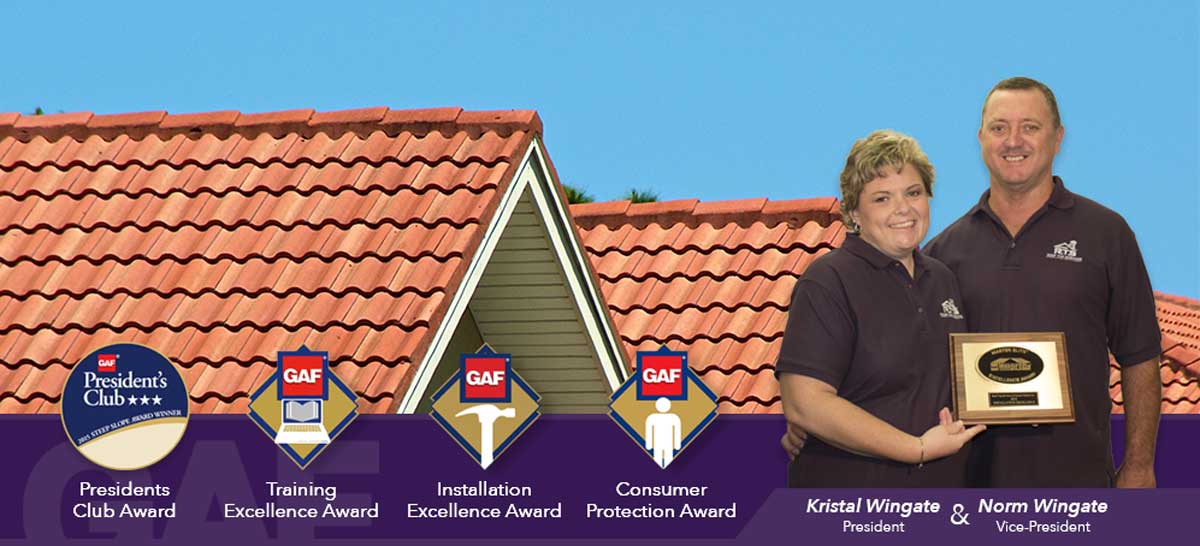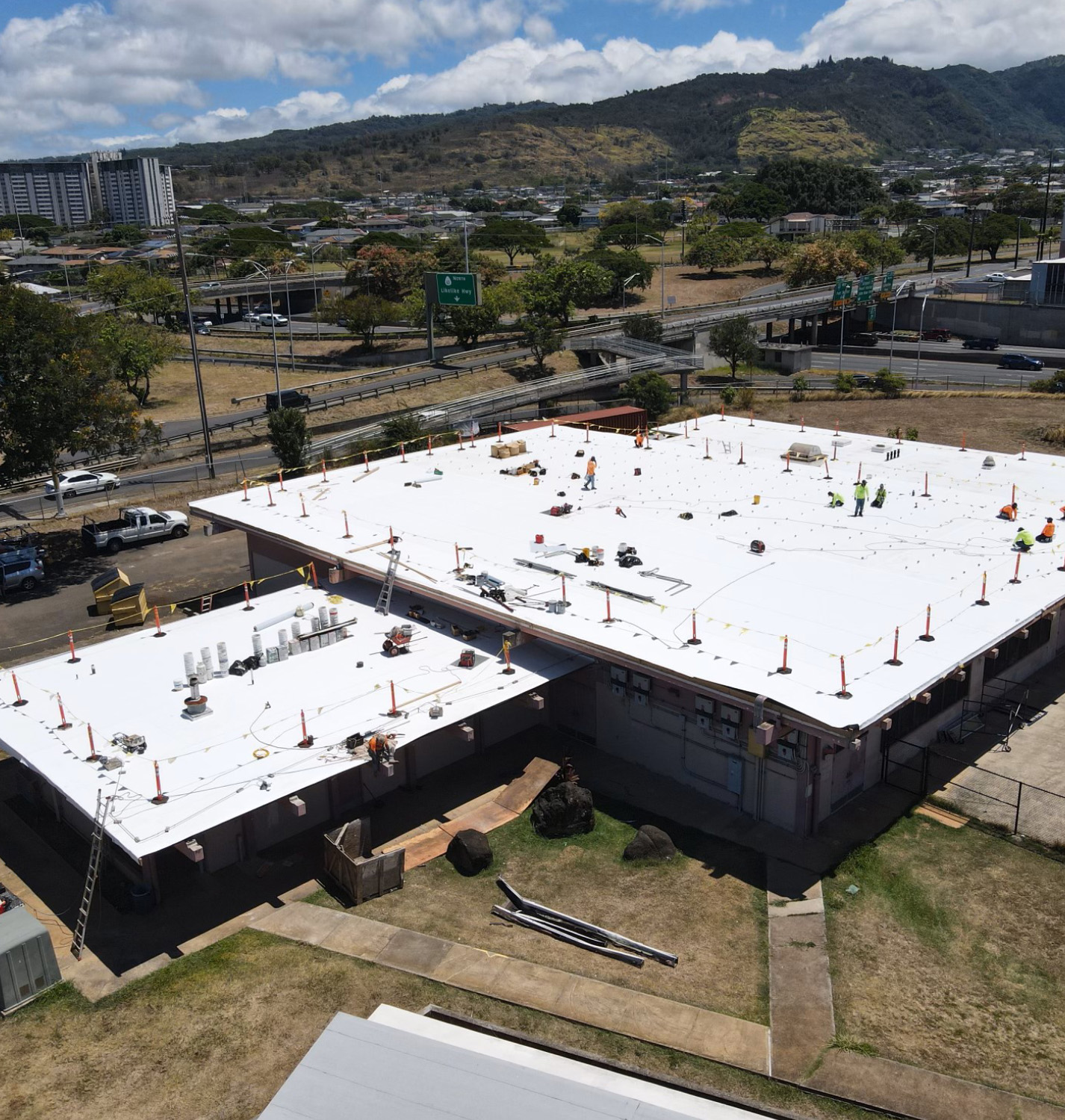Complete Guide for Working with roofing contractors honolulu
Wiki Article
The Ultimate Checklist for Roofing System Install: Ensuring High Quality and Longevity
The procedure of setting up a roofing system calls for cautious interest to detail. A complete checklist can aid ensure quality and durability throughout the job. From assessing the existing roofing system condition to selecting the appropriate materials, each action is necessary. Proper prep work and devices play an important function in attaining a successful installation. Numerous overlook the relevance of final inspections and ongoing upkeep. Understanding these components can significantly impact the durability of a new roof covering.Examining Your Current Roofing Condition
Just how can one properly identify the problem of their existing roofing system? A comprehensive assessment is essential for assessing a roof covering's integrity. Property owners must start by examining the roof from the ground, searching for noticeable indicators of wear such as missing shingles, sagging areas, or discoloration. Closer evaluation can be done by accessing the roofing system itself, where one must check for split or crinkled shingles and examine blinking around vents and chimneys.Additionally, the interior of the home warrants interest; water spots or mold development on ceilings and walls may suggest leakages. Attic inspections can expose possible concerns, such as inadequate ventilation or signs of moisture.Regular examinations, preferably twice a year, can help identify problems early and protect against costly fixings. By understanding the roof's existing state, home owners can make enlightened choices about necessary maintenance or replacements.Picking the Right Roof Materials
When selecting roof covering products, what elements should homeowners consider to assure a long lasting and efficient choice? Initially, the climate plays a significant duty; products need to endure regional weather problems, whether it's hefty rain, snow, or extreme sun. Next, the longevity of the product is crucial; choices like metal or slate deal expanded lifespans compared to asphalt tiles. Homeowners need to additionally assess the product's weight, as this can affect the architectural integrity of the home. Furthermore, looks matter; the picked material must enhance the general building design. Energy performance is another factor to consider; some materials show warmth, reducing air conditioning prices. Ultimately, budget plan constraints will certainly determine options; while some products may have a reduced upfront expense, long-lasting longevity can result in better savings. By evaluating these variables, property owners can make educated decisions that boost their roofing system's high quality and durability.Preparing for Installation
Before the installation process begins, house owners need to assure that their residential property is properly prepared to accommodate the new roof covering. This prep work involves numerous vital steps to ensure a smooth and effective installment. First, homeowners need to remove the area around your house of any type of particles, devices, or furniture that could impede access for professionals. Additionally, it is necessary to inform neighbors concerning the future job to lessen interruption and protected cooperation.Next, homeowners need to check their existing roofing system and structural parts, resolving any kind of prospective concerns such as deteriorating timber or leaks that could influence the installment. In addition, safeguarding required permits and sticking to neighborhood building regulations is vital for compliance and safety. Finally, scheduling the installment during favorable climate condition aids stop delays and warranties that the work earnings without complications. Appropriate prep work sets the structure for an effective roof task, ultimately improving the durability and performance of the new roofing.
Necessary Devices and Tools
In roofing setup, having the right tools and equipment is vital for a successful task. This consists of crucial safety equipment, numerous roof setup tools, and effective material handling equipment. Appropriate prep work and option of these items can considerably boost efficiency and safety on the job website.Security Gear Necessities
Safety and security equipment is an essential part of any type of roof installation job, ensuring the health of employees at elevated elevations. Essential safety devices includes tough hats, which safeguard versus falling particles, and safety goggles to secure the eyes from dust and fragments. Non-slip shoes is significant for keeping grip on high surfaces, while harnesses and lanyards supply fall defense, avoiding serious injuries. Gloves aid safeguard hands from sharp products and reduce tiredness during expanded periods of work. In addition, high-visibility vests enhance visibility, advertising understanding amongst staff member and nearby employees. The usage of ear security may additionally be suggested in noisy atmospheres. On the whole, adhering to security equipment requirements is critical for a safe and efficient roof covering installment process.
Roofing Installation Devices
Correct safety and security actions lay the foundation for an effective roof project, but having the right devices and tools is similarly crucial. Necessary devices for roof installation consist of a ladder, permitting risk-free access to the roofing system, and a roof covering nail weapon to ensure efficient and secure attachment of materials. A chalk line is vital for noting straight lines, while an energy knife is required for cutting roof covering products accurately. In addition, a crowbar aids in getting rid of old roof shingles. Workers should additionally have a level to validate appropriate alignment and water drainage. Lastly, a good set of job gloves protects hands while supplying grip. Together, these devices assist in a smooth roof covering process, boosting both quality and longevity.Material Handling Tools

A range of material handling devices is essential for an effective roof covering setup process. Devices such as forklifts, hoists, and dollies help with the motion of heavy products like roof shingles and underlayment to the task website and onto the roof covering. Utilizing scaffolding and ladders assurances risk-free accessibility to raised locations while reducing the threat of injury. Tarps and containers are required for proper storage and organization of materials, preventing damages and guaranteeing simple access. In addition, a crane may be required for larger roof covering tasks to raise significant products directly onto the roofing. Correct training in utilizing this equipment is vital; it enhances operations performance and adds to general task security, assuring an effective roof covering installment.
Step-by-Step Installment Refine
The detailed installment procedure is crucial for an effective roofing installment. It begins with preparing the roofing surface area, followed by the appropriate installation of underlayment, and wraps up with the reliable securing of roofing materials. Each of these steps plays an essential role in ensuring the toughness and capability of the roof covering.Prepare the Roofing Surface
Preparing the roofing system surface is essential for ensuring an effective setup of roof covering products. This process begins with an extensive examination to recognize any type of existing damage or particles. Any type of loose tiles, extending nails, or old roofing products need to be gotten rid of to develop a clean, smooth foundation. Next off, the roofing deck should be looked for rot or architectural problems, as these can endanger the stability of the brand-new roofing. After repair work, a comprehensive cleansing is required; this consists of sweeping away dirt, leaves, and any kind of other impurities that might prevent bond. Making sure correct drain and air flow is important, as these variables influence the durability of the roof. A well-prepared surface establishes the stage for optimal installment and longevity.Set Up Underlayment Effectively
Installing underlayment properly is basic for enhancing the overall efficiency of the roof covering system. The process begins with picking the roofing company honolulu appropriate underlayment material, which can include really felt, artificial, or rubberized alternatives. Next, confirm the roof covering surface is clean and completely dry before laying the underlayment - roofing contractors honolulu. Begin at the lowest point of the roofing, rolling out the underlayment flat and overlapping each row by a minimum of six inches. It is very important to protect the underlayment in position with staples or roofing nails, avoiding spaces or creases that could compromise water resistance. Trim excess material at the edges, guaranteeing a neat finish. This careful setup action is essential for giving an added layer of security against wetness and improving durabilityProtect Roof Covering Products Efficiently
After confirming the underlayment is properly mounted, the following step involves securing the roofing materials properly. Initially, the professional roofer should collect all necessary materials, consisting of roof shingles, nails, and flashing. Beginning at the cheapest point of the roofing, roof shingles should be stocked a staggered pattern, verifying proper overlap to protect against leakages. Each shingle has to be secured with nails, using the maker's recommended spacing and quantity. It is crucial to drive nails directly, avoiding over-penetration, which can endanger the material. Blinking ought to be mounted around chimneys and vents to boost waterproofing. The contractor must perform an extensive examination to verify all materials are firmly fastened, as this will significantly influence the roofing's general resilience and long life.Performing Final Evaluations
Complete last inspections are vital to assure that a freshly installed roofing system satisfies all security and top quality criteria. This critical step involves assessing the entire roof for any kind of prospective concerns that might emerge post-installation. Assessors should examine the alignment of roof shingles, ensuring they are effectively safeguarded and devoid of problems. Flashing and ventilation systems must additionally be assessed for proper installment and functionality.Additionally, the examiner must inspect gutters and downspouts to confirm they are appropriately placed to promote water drain. Any kind of indications of leakages, misaligned materials, or poor sealing around infiltrations should be dealt with instantly. Contractors must additionally ensure that all debris from the setup procedure is removed, leaving the site tidy and risk-free. Carrying out these extensive evaluations helps protect against future difficulties, eventually prolonging the lifespan of the roof and giving house owners with assurance regarding their financial investment.Maintaining Your New Roof Covering
Appropriate maintenance is vital for assuring the durability and efficiency of a new roofing. Homeowners ought to perform normal assessments at the very least twice a year, preferably in springtime and fall, to determine possible concerns early. During these assessments, they ought to seek signs of damage, such as missing tiles, leakages, or debris buildup, which can hamper water drainage and advertise mold growth.Cleaning seamless gutters and downspouts is essential, as blocked systems can cause water damages and architectural issues. Additionally, trimming overhanging branches can stop abrasion and particles build-up on the roofing system surface.It's additionally a good idea to set up specialist examinations every couple of years to review the roof's problem extensively. Maintaining documents of upkeep tasks and fixings can aid track the roof covering's efficiency with time (honolulu roofing contractor). By sticking to a constant maintenance routine, homeowners can safeguard their investment and guarantee their brand-new roofing stays effective for several years aheadOften Asked Questions
How Long Does a Regular Roof Covering Installment Take?
The duration of a common roof installment differs based on factors such as roof covering size, materials, and climate condition. Usually, it can take anywhere from someday to several weeks to finish the setup.Can I Mount a New Roofing Over an Existing One?
The question of mounting a new roof covering over an existing one commonly occurs. Several property owners consider this choice for cost-effectiveness, yet it is important to evaluate regional building codes and the architectural honesty of the existing roof covering.What Allows Are Required for Roofing Setup?
Prior to mounting a roof covering, one have to examine neighborhood laws. Usually, building authorizations are required, along with inspections to ensure conformity with safety requirements and zoning regulations. Consulting with local authorities is vital for correct assistance.What Service warranties Are Available for Roof Products?
Various guarantees exist for roof covering materials, typically including manufacturer guarantees covering flaws and performance. In addition, some professionals supply workmanship guarantees, making sure installment quality. Purchasers must meticulously review terms to comprehend insurance coverage period and limitations.How Can Weather Condition Impact the Installment Refine?
Climate considerably impacts the installation process, as rain, snow, or extreme temperatures can delay work, affect material bond, and compromise security. Appropriate planning and scheduling around weather condition forecasts are necessary for effective roof covering installment.Report this wiki page